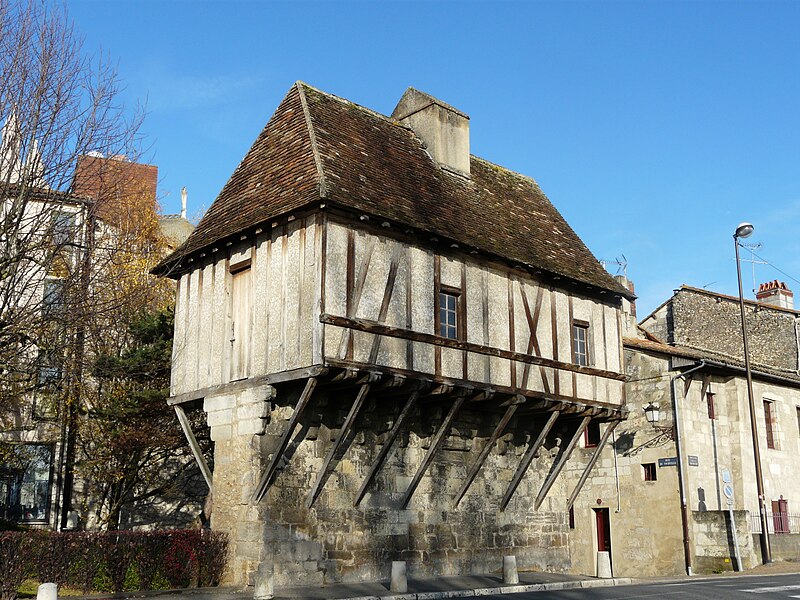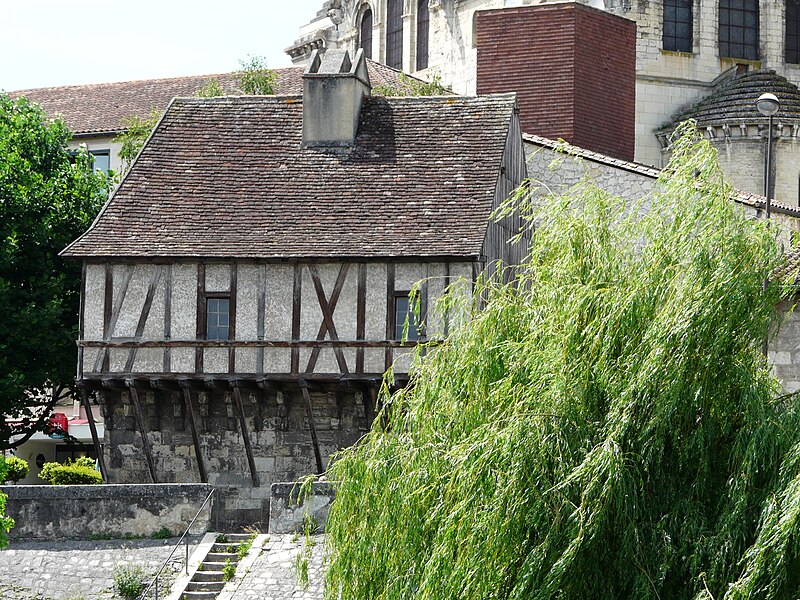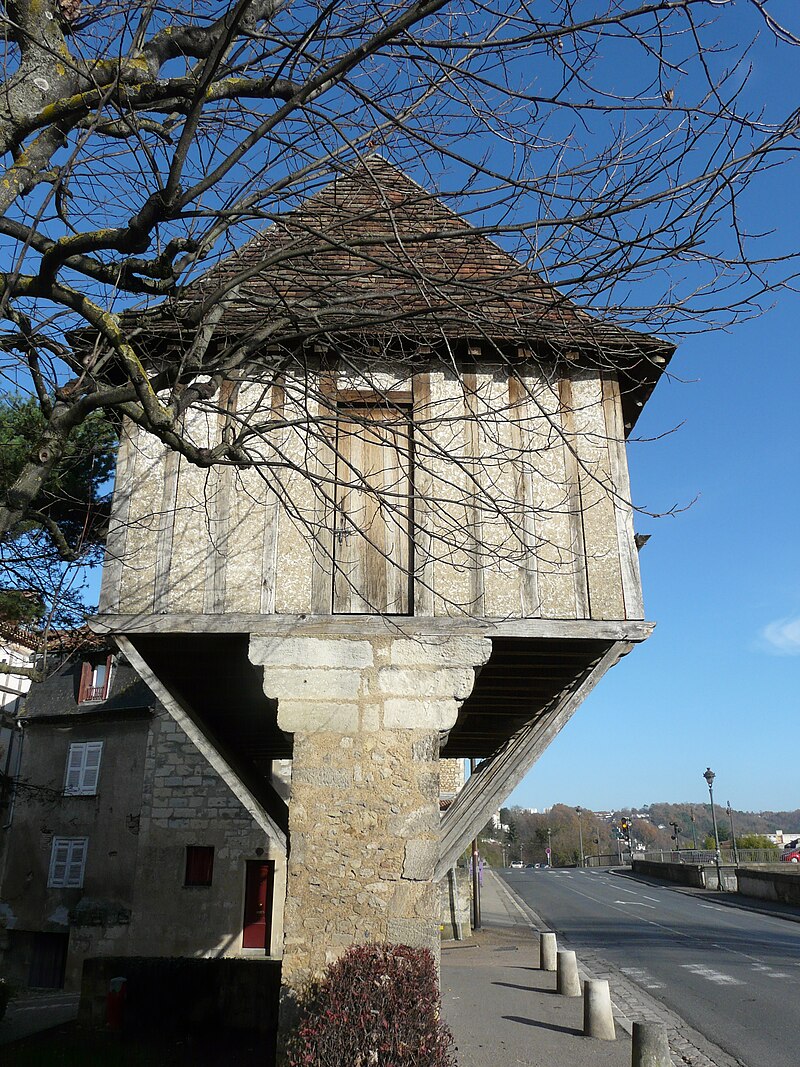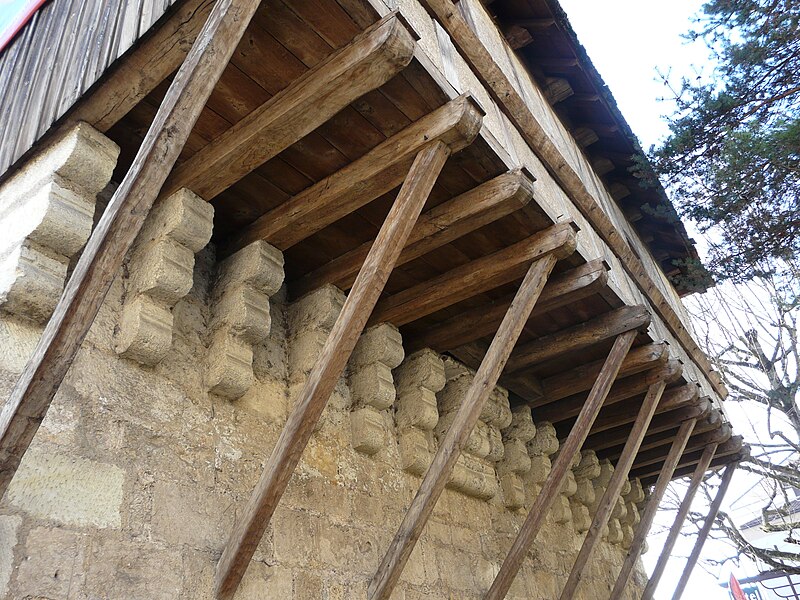Un Glimpse into History: L’eschif de Creyssac in Périgueux

Nestled in the heart of Périgueux, within the Dordogne department of Nouvelle-Aquitaine, stands the intriguing edifice known as “L’eschif de Creyssac” or “Loge de Guet”. Dating back to the 14th century, this unique structure bears witness to a bygone era and carries a rich heritage within its walls.
This architectural gem has been granted the prestigious status of a historical monument, a testament to its significance in the annals of time. Located at 9 Boulevard Georges-Saumande, at the intersection of Rue Tourville, this building stands on the fringes of the Isle River, a mere hundred meters southeast of the grand Cathedral Saint-Front.
Despite its nomenclature suggesting a mill, the eschif has never functioned as such. Often mistakenly referred to as the “Vieux moulin,” “moulin du Chapitre,” or even “moulin de Saint-Front,” these misnomers stem from the proximity of the demolished Saint-Front mill, which once stood amidst the flowing waters of the Isle in 1860.

In its heyday, this structure served as a guard post, aiding in the vigilant oversight of the Tournepiche Bridge during the Middle Ages. Erected in 1347 upon the ramparts of Puy-Saint-Front – the medieval citadel corresponding to the historic center of Périgueux – the eschif found its place at the foot of these ramparts, where the waters of the Isle flowed. Its construction marked the site where the previous year’s flood had claimed the Creyschat house.
The mid-19th century saw the destruction of the ramparts to pave the way for the Imperial Route 21 from Paris to Barèges, giving rise to the present-day Boulevard Georges Saumande.
Bestowed with the erroneous name “moulin Saint-Front,” the eschif was enlisted as a historical monument in 1929. However, this designation was revised in 1977, granting it the revered status it deserved all along.
Since 1976, the eschif has been owned by the city of Périgueux, serving as a living relic that continues to captivate all who behold it.

As an architectural marvel, the eschif has preserved its timber-framed structure and cob walls. Its seemingly precarious stance is upheld by slender supports connected by bracing beams along its two longitudinal facades, a testament to medieval engineering ingenuity.
Through a series of captivating photographs, the eschif unfolds before our eyes. Captured from the left bank of the Isle, its profile stands as a silent guardian, narrating stories of centuries past. The southwest perspective reveals the building’s distinctive features, while the supporting braces bear witness to the intricate craftsmanship that went into its construction.

Beyond its specific appellation, “eschif” generally alludes to small fortifications erected to safeguard entrances to cities when walls were the primary fortifications. Often fashioned from wood, these structures were temporary in nature and served as defensive measures in cases where time or resources were scarce, a testament to the adaptive nature of medieval architecture.
L’eschif de Creyssac stands not only as a relic of the past but as a living testament to the ingenuity and history of Périgueux, inviting all to delve into its mysteries and stories etched within its weathered walls.